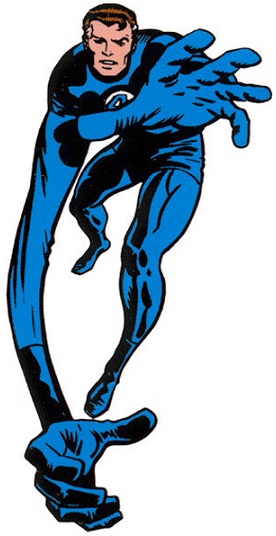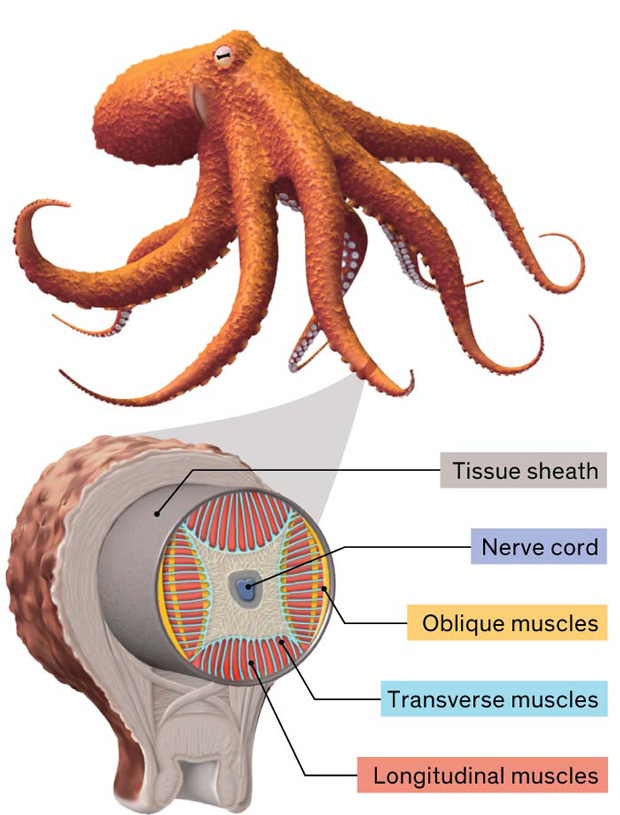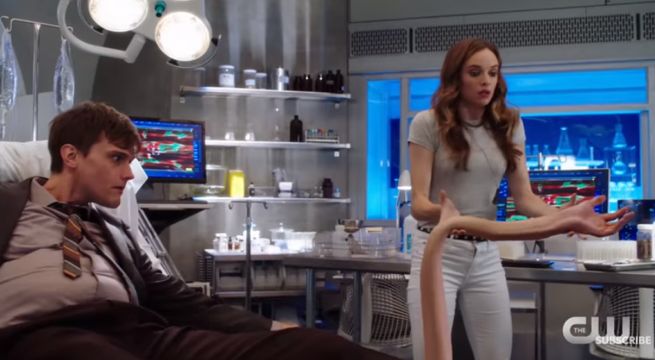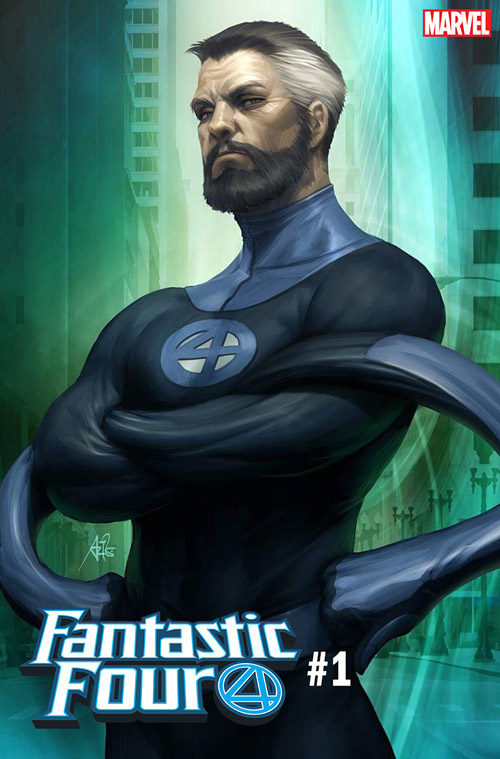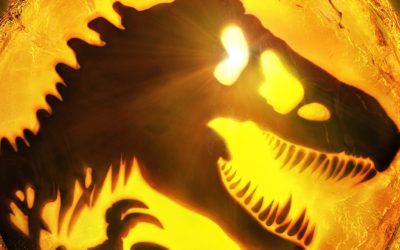It’s a good time to be a stretchy hero.
The Flash has seen the Elongated Man make a live action debut, Plastic Man played a key role in Dark Knights: Metal at DC Comics and is now a team member of The Terrifics, Elastigirl is headlining in The Incredibles 2, and in August, the one and original Mr. Fantastic returns to active duty in the Marvel Universe with the return of the monthly Fantastic Four series.
Stretching characters are cool – no doubt – but for the most part, their powers and the depictions thereof are all about comic book superscience. But that doesn’t mean we can’t learn from them and apply what they do to our world. And as usual…when you look at the science of the powers, sometimes you end up with some seriously cool implications and considerations that you may have never thought about. Case in point:
Hey Stretchy Folks – Does Anyone Have an Endoskeleton?
Seriously – like a real one, a skeleton on the inside, made of calcium and magnesium compounds?
Okay – already out of the gate, we’ve got a weird thought to consider: Elastigirl, Plastic Man, Elongated Man and Mr. Fantastic might not have normal, human skeletons anymore. That’s just weird in and of itself…skeletons are one of the big classification categories that separate a lot of animals from everything else. Think of an animal – you’re probably thinking of one with a bony endoskeleton, right? There are some weirdos (sharks, rays and other classes of fish with cartilaginous skeletons, for example), but nearly every vertebrate on earth has a bony endoskeleton.
But in our world we do have animals – animals with skeletons – that can squeeze through very small spaces. Small rodents and cats for example, have no problems making it through impossibly tight spots. Let’s take a mouse for example – a common exterminator saying is that if there’s a hole the width of a #2 pencil, a mouse can fit through it. Feel free to freak out and start checking your room for small holes now.
But mice don’t have collapsible skeletons. How do they squeeze through then? For one, their fur makes them look larger than they are, so the volume you’re looking at squeezing through a hole is different than what you’re initially thinking. Secondly, mice (and other animals that can do the squeezing act) don’t have collar bones holding their front “arms” away from their neck. And lastly, they’ve got slightly stretch connective tissue and very strong back legs to push them through the small openings from which they emerge to freak you out.
The rule of thumb, according to exterminators, if the skull can fit, the mouse can fit. A small mouse’s skull can have the diameter or a penny.
But our heroes most definitely aren’t rodents. Along with squeezing through small openings, they can elongate their bodies, and take on different shapes. Who does that?
To find a natural analogue for those abilities, you need to look at tossing out the skeleton altogether. And that means looking at our octopi pals. Our our cephalopod overlords. Whichever.
Octopus arms (and elephant trunks and your tongue, for that matter) are muscular hydrostats – they can bend, stretch and change shape, without skeletal support. They are muscles – don’t let that slip away from your understanding. They’re just not attached to bones, like they are in creatures with skeletons.
Muscles work by producing force, and they can only do that when they become shorter. Think of your upper arm. If you’re holding a weight, and you want to do a curl with it, you’re going to shorten your bicep. As your bicep shortens and contracts, your tricep lengthens and relaxes. The bicep and tricep are antagonistic muscles – one compliments the motion of the other, and together, they produce a linear motion.
A muscular hydrostat, like an octopus arm or your tongue, has muscles oriented in three directions – which is not surprising, given that it can move in three directions. Think of an octopus arm – the muscle fibers are lined up parallel to the long axis of the arm in bundles, perpendicular to the long axis of the arm, and also obliquely wrapped around the muscles parallel to the long axis.
The further away from the center of the arm/tongue/trunk the parallel muscle fibers are, the more elaborate movements are possible. If a tongue is just made to protrude, like that of a snake or anteater, the muscle fibers that are parallel to to the long axis are more centrally located, while similar fibers in our tongues, nautilus tentacles and octopus arms are located further from the center. The more peripheral fibers allow for the probing and manipulation abilities seen in octopus arms and an elephant’s trunk.
There’s a lot more detail in regards to the orientation of the muscles in a muscular hydrostat, with each configuration allowing for various changes in fine control and possible movements, as you’d expect.
Stretching, Shortening and Changing Shape
We’ve got three types of muscles in muscular hydrostats – so how do they work to make things longer? That’s easy – keep the volume constant, have stretchy skin, and contract the muscles that are perpendicular to the long axis of the thing you’re trying to stretch. Frogs’ tongues are set up in this manner, and can stretch up to 180% of their length at rest. Octopus arms work in a similar fashion.
Octopus arms and other muscular hydrostats, as explained by Kier and Smith, avoid this, and can provide mechanical amplification for the structure. The key is in the constant volume of the structures, which allows for a high ratio between length and width. In other words, the extended arm of the octopus can still have strength.
The muscular arrangements of structures that are muscular hydrostats allow for the full range of abilities seen in the likes of Elastigirl, Elongated Man and the others. Bending occurs when longitudinal muscles one one side of the axis are contracted while the other side is relaxed. Shortening occurs when the longitudinal muscles are contracted. Torsion, or twisting of the structure is possible due to the wrapped muscle fibers along the long axis.
Put all of this together, and you can get something like this going on…
Just to reiterate, check this one out from National Geographic – that octopus is 600 pounds. The opening is the size of a quarter.
But Wait a Minute – I Got Punched by Plastic Man…
All of the above is good for changing shape and moving, but when you’re doing it, you’re mostly staying flexible – gooey, even. Every stretchy hero named here has, at one time or another, punched someone while stretched out. How are structures that seem to be muscular hydrostats turned into punching fists and kicking feet, among other things?
The structures themselves are muscular hydrostats, and part of the limitation is that the volume doesn’t change. Stiffening of a muscular hydrostat is possible – make your tongue stiff right now – see? That’s a contraction of the muscles. But for punching? You need something tougher. Something that is analogous to the bones that are found in a skeleton, maybe. But as a stretchy hero, you don’t have a skeleton. Or don’t you?
Why not a hydrostatic skeleton?
We’re done with octopi, your tongue and elephant trunks. Now, we’re talking invertebrates – worms and their pals.
This isn’t totally new – muscular hydrostats are a type of hydrostatic skeleton, and some animals have hydrostatic organs, but creatures with full hydrostatic skeletons aren’t what you’d call…complex. Again – think of worms.
Hydrostatic skeletons work by having a fluid-filled chamber, called the coelom, surrounded by muscles that can contract and relax, changing the pressure in the chamber in order to produce changes in shape and movement. Contract the muscles that circle the chamber, and the fluid is squeezed out and elongates the animal. Contract the muscles that run parallel to the coelom, and the animal contracts. Combine the two, and the earthworm creeps along.
Contracting the longitudinal muscles can shorten the animal and make it “tougher” in a sense, but there’s another means to make tissues rigid using hydrostatic means. Hydrostatic organs are found on some animals, such as the penis in mammals. In this case, the hydrostatic fluid is blood, which fills tissue to result in an erection, the point of which is to make the organ rigid, and unbendable.
This type of anatomical change, making extremities hydrostatic organs could result in our stretchy pals being able to punch and kick, as well as just have functional fingers and toes.
Stretchy Limitations
So…the powers seen in stretchy heroes are analogous to a combination of muscular hydrostats and hydrostatic skeletons/organs seen in our world. But this hydro-powered coolness isn’t infinite.
As mentioned earlier, hydrostats work because they maintain a constant volume. Short and fat or long and thin, the total volume of the structure cannot change. If you stretch, you have to get thinner. The fluid that allows these cool structures to move is within the muscle cells themselves, not held in special organs. If, for instance, Elastigirl’s arm is an example of a muscular hydrostat, then its overall volume cannot change.
As Dr. David Jesson showed in chapter 11 of The Secret Science of Superheroes, “You’ve Got to Learn to Be More Flexible: The Mechanics of the Marvellous,” Calculating the volume of Elastigirl’s arm is easy – it’s about 2430 cm3. But that’s it. No matter how short or long her arm is, that’s the volume. Using the formula for the volume of a cylinder:
Volume = 𝝅r2l
Where r = the radius of the cylinder and l = the length of the cylinder…
At Elastigirl’s reported full arm stretch of 30 meters, her arm would be 1 cm in diameter – although its also reported that she can flatten any part of her body to 1 mm in thickness. Jesson suggests that may be evidence of some kind of skeletal structure, or, something isn’t matching the super-science of The Incredibles to the science of our world.
Length of stretch has also been addressed with Mr. Fantastic – reportedly 1500 ft (457 meters) before suffering agonizing pain and the danger of splitting. Elongated Man has an unstated limit, but Plastic Man is reportedly limitless.
Another limitation comes in terms of the length of stretch and being able to hold the stretched piece of yourself up. Let’s take Plastic Man for example – if he stretches his arm 50 meters and lifts something, say a .5 kg book…again, the muscular hydrostat nature of his arm would allow him to elongate and manipulate the object, but if he wants to lift the object (and his arm up) he’s now got a 3rd class lever that’s 50 meters long, with a weight attached to it. Third-class levers don’t give any kind of mechanical advantage – in fact, they take it away.
Calculating the force needed to lift an object at a distance with lever is talking about calculating a moment. You’re trying to rotate that object around in a circle (if your lift continued).
Moment = force x perpendicular length
Force = mass x gravity, or .5 x 9.8 m/s2 = 4.9 Newtons, so
Moment = (4.9 N)(50 m)
Moment = 245 N m
That book suddenly feels like it weighs a lot. It would be like holding a seven year old kid in one hand, while your arm is extended away from your body.
Grabbing someone and throwing them while the stretchy hero’s arm is extended just 10 meters? Yow. The heck with the biology that makes it kinda-sorta possible to stretch that far…physics says no.
And also, while you’re stretching, you’ll be limited in shape and length by connective tissue. This is probably what Mr. Fantastic is referring to when he says he feels pain at around 1500 feet. At that length, he’s at risk of literally pulling himself apart. How does he even manage to get to that length? As with molding faces into disguises, mooshing your skull (and brain) and showing no ill effects and many other abilities shown by this group over the years, we’re going to have to give a nod to comic book superscience.

The Elongated Man – in full costume and looking spiffy. Maybe he sleeps in a pitcher. Image – The CW
But I Like Elongated Man…Does This Mean He’s…
Back in the day, Alan Moore wrote a classic story in DC’s Swamp Thing #21 series called “Anatomy Lesson.” The issue was groundbreaking in so many regards and one of the cool revelations was that Swamp Thing, who thought he was a man that was a swamp creature, learned that he wasn’t a man at all. Not to spoil anything, he only thought he was a man. Swamp Thing’s human days were long behind him.
It would be easy to play the same card with Mr. Fantastic, Plastic Man, and Elongated Man. They’re not human anymore. Whatever gave them their abilities also changed them, anatomically…physiologically…fundamentally. They’re not human anymore. They don’t have skeletons. They only think they do, and only think they’re human, so they mimic having them. Show me a Plastic Man who’s a puddle of mush when he sleeps. Now we’re talking. It’s creepy as all get out, but we’re talking.
And Where Does This Lead in a STEM Setting?
Here. Mimicking nature makes for better robots.




